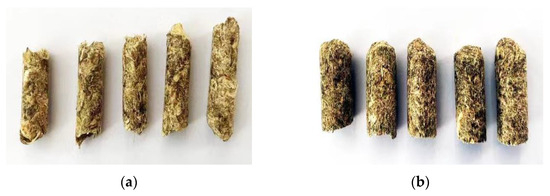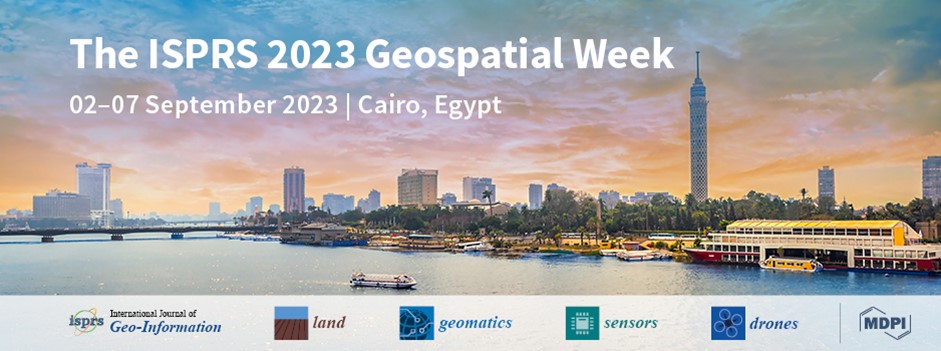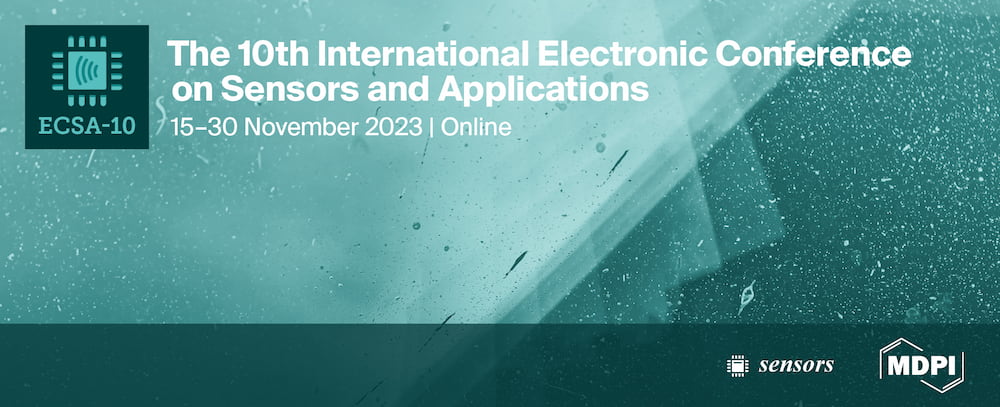-
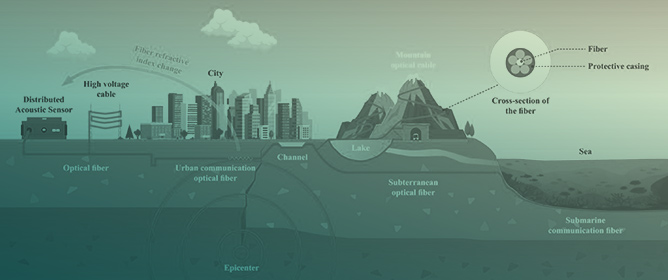 Detecting the Unseen: Understanding the Mechanisms and Working Principles of Earthquake Sensors
Detecting the Unseen: Understanding the Mechanisms and Working Principles of Earthquake Sensors -
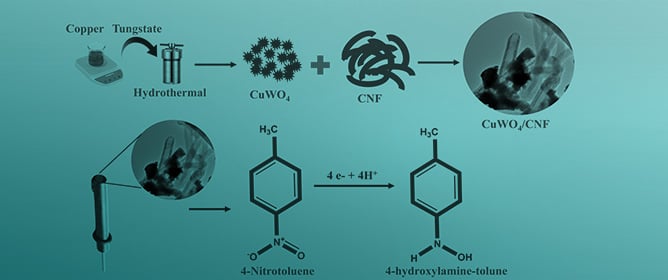 Fabrication of Carbon Nanofiber Incorporated with CuWO4 for Sensitive Electrochemical Detection of 4-Nitrotoluene in Water Samples
Fabrication of Carbon Nanofiber Incorporated with CuWO4 for Sensitive Electrochemical Detection of 4-Nitrotoluene in Water Samples -
 Reinforcement-Learning-Based Robust Resource Management for Multi-Radio Systems
Reinforcement-Learning-Based Robust Resource Management for Multi-Radio Systems -
 Gain Enhancement and Cross-Polarization Suppression of Cavity-Backed Antennas Using a Flared Ground Cavity and Iris
Gain Enhancement and Cross-Polarization Suppression of Cavity-Backed Antennas Using a Flared Ground Cavity and Iris -
 The Effect of Surrounding Vegetation on Basal Stem Measurements Acquired Using Low-Cost Depth Sensors in Urban and Native Forest Environments
The Effect of Surrounding Vegetation on Basal Stem Measurements Acquired Using Low-Cost Depth Sensors in Urban and Native Forest Environments
Journal Description
Sensors
Sensors
is an international, peer-reviewed, open access journal on the science and technology of sensors. Sensors is published semimonthly online by MDPI. The Polish Society of Applied Electromagnetics (PTZE), Japan Society of Photogrammetry and Remote Sensing (JSPRS), Spanish Society of Biomedical Engineering (SEIB) and International Society for the Measurement of Physical Behaviour (ISMPB) are affiliated with Sensors and their members receive a discount on the article processing charges.
- Open Access — free for readers, with article processing charges (APC) paid by authors or their institutions.
- High Visibility: indexed within Scopus, SCIE (Web of Science), PubMed, MEDLINE, PMC, Embase, Ei Compendex, Inspec, Astrophysics Data System, and other databases.
- Journal Rank: JCR - Q2 (Instruments & Instrumentation) / CiteScore - Q1 (Instrumentation)
- Rapid Publication: manuscripts are peer-reviewed and a first decision is provided to authors approximately 16.4 days after submission; acceptance to publication is undertaken in 2.8 days (median values for papers published in this journal in the first half of 2023).
- Recognition of Reviewers: reviewers who provide timely, thorough peer-review reports receive vouchers entitling them to a discount on the APC of their next publication in any MDPI journal, in appreciation of the work done.
- Testimonials: See what our editors and authors say about Sensors.
- Companion journals for Sensors include: Chips, Automation, JCP and Targets.
Impact Factor:
3.9 (2022);
5-Year Impact Factor:
4.1 (2022)
Latest Articles
Rapid and Non-Destructive Estimation of Moisture Content in Caragana Korshinskii Pellet Feed Using Hyperspectral Imaging
Sensors 2023, 23(17), 7592; https://doi.org/10.3390/s23177592 (registering DOI) - 01 Sep 2023
Abstract
Moisture content is an important parameter for estimating the quality of pellet feed, which is vital in nutrition, storage, and taste. The ranges of moisture content serve as an index for factors such as safe storage and nutrition stability. A rapid and non-destructive
[...] Read more.
Moisture content is an important parameter for estimating the quality of pellet feed, which is vital in nutrition, storage, and taste. The ranges of moisture content serve as an index for factors such as safe storage and nutrition stability. A rapid and non-destructive model for the measurement of moisture content in pellet feed was developed. To achieve this, 144 samples of Caragana korshinskii pellet feed from various regions in Inner Mongolia Autonomous Region underwent separate moisture content control, measurement using standard methods, and captured their images using a hyperspectral imaging (HSI) system in the spectral range of 935.5–2539 nm. The Monte Carlo cross validation (MCCV) was used to eliminate abnormal sample data from the spectral data for better model accuracy, and a global model of moisture content was built by using partial least squares regression (PLSR) with seven preprocessing techniques and two spectral feature extraction techniques. The results showed that the regression model developed by PLSR based on second derivative (SD) and competitive adaptive reweighted sampling (CARS) resulted in better performance for moisture content. The model showed predictive abilities for moisture content with a coefficient of determination of 0.9075 and a root mean square error (RMSE) of 0.4828 for the training set; and a coefficient of determination of 0.907 and a root mean square error (RMSE) of 0.5267 for the test set; and a relative prediction error of 3.3 and the standard error of 0.307.
Full article
(This article belongs to the Section Sensing and Imaging)
►
Show Figures
Open AccessArticle
Reconfigurable Digital Satellite-Borne Base Station Design and Virtual Function Fast Migration Algorithm
Sensors 2023, 23(17), 7591; https://doi.org/10.3390/s23177591 (registering DOI) - 01 Sep 2023
Abstract
A breakthrough in the technology for virtualizing satellite-borne networks and computing and storage resources can significantly increase the processing capacity and resource utilization efficiency of satellite-borne base stations in response to the development trend in multi-star and multi-system converged satellite internet iterative systems.
[...] Read more.
A breakthrough in the technology for virtualizing satellite-borne networks and computing and storage resources can significantly increase the processing capacity and resource utilization efficiency of satellite-borne base stations in response to the development trend in multi-star and multi-system converged satellite internet iterative systems. The protocol processing function of traditional satellite communication systems is generally placed in the ground station system for processing, with poor flexibility and low efficiency. As a result, a reconfigurable digital satellite-borne base station architecture design is suggested, allowing for separation of the hardware and software of the satellite-borne base station and flexible programming and dynamic loading of the satellite-borne base station’s functions by software. Meanwhile, a fast adaptive migration algorithm based on multi-dimensional environment awareness is proposed on top of the reconfigurable digital base station, and migration precomputation and real-time computation are added in order to realize rapid deployment of the digital base station system network. Simulation results demonstrate the effectiveness of the proposed algorithm in enhancing system stability and decreasing real-time calculation costs associated with system network migration under conditions of high dynamic changes for each network element in a star-loaded environment. In conclusion, a digital satellite-borne base station system that effectively addresses the issues of low flexibility and high dynamic changes of nodes in the resource-constrained satellite environment can be created by combining the adaptive migration algorithm and the reconfigurable digitized satellite-borne base station architecture.
Full article
(This article belongs to the Section Communications)
►▼
Show Figures

Figure 1
Open AccessArticle
Automatic Detection of Dyspnea in Real Human–Robot Interaction Scenarios
by
, , , , , , and
Sensors 2023, 23(17), 7590; https://doi.org/10.3390/s23177590 (registering DOI) - 01 Sep 2023
Abstract
A respiratory distress estimation technique for telephony previously proposed by the authors is adapted and evaluated in real static and dynamic HRI scenarios. The system is evaluated with a telephone dataset re-recorded using the robotic platform designed and implemented for this study. In
[...] Read more.
A respiratory distress estimation technique for telephony previously proposed by the authors is adapted and evaluated in real static and dynamic HRI scenarios. The system is evaluated with a telephone dataset re-recorded using the robotic platform designed and implemented for this study. In addition, the original telephone training data are modified using an environmental model that incorporates natural robot-generated and external noise sources and reverberant effects using room impulse responses (RIRs). The results indicate that the average accuracy and AUC are just 0.4% less than those obtained with matched training/testing conditions with simulated data. Quite surprisingly, there is not much difference in accuracy and AUC between static and dynamic HRI conditions. Moreover, the beamforming methods delay-and-sum and MVDR lead to average improvement in accuracy and AUC equal to 8% and 2%, respectively, when applied to training and testing data. Regarding the complementarity of time-dependent and time-independent features, the combination of both types of classifiers provides the best joint accuracy and AUC score.
Full article
(This article belongs to the Section Sensors and Robotics)
►▼
Show Figures

Figure 1
Open AccessArticle
Dual-Channel Stretchable, Self-Tuning, Liquid Metal Coils and Their Fabrication Techniques
by
, , , , , , , , and
Sensors 2023, 23(17), 7588; https://doi.org/10.3390/s23177588 (registering DOI) - 01 Sep 2023
Abstract
Flexible and stretchable radiofrequency coils for magnetic resonance imaging represent an emerging and rapidly growing field. The main advantage of such coil designs is their conformal nature, enabling a closer anatomical fit, patient comfort, and freedom of movement. Previously, we demonstrated a proof-of-concept
[...] Read more.
Flexible and stretchable radiofrequency coils for magnetic resonance imaging represent an emerging and rapidly growing field. The main advantage of such coil designs is their conformal nature, enabling a closer anatomical fit, patient comfort, and freedom of movement. Previously, we demonstrated a proof-of-concept single element stretchable coil design with a self-tuning smart geometry. In this work, we evaluate the feasibility of scaling this coil concept to a multi-element coil array and the associated engineering and manufacturing challenges. To this goal, we study a dual-channel coil array using full-wave simulations, bench testing, in vitro, and in vivo imaging in a 3 T scanner. We use three fabrication techniques to manufacture dual-channel receive coil arrays: (1) single-layer casting, (2) double-layer casting, and (3) direct-ink-writing. All fabricated arrays perform equally well on the bench and produce similar sensitivity maps. The direct-ink-writing method is found to be the most advantageous fabrication technique for fabrication speed, accuracy, repeatability, and total coil array thickness (0.6 mm). Bench tests show excellent frequency stability of 128 ± 0.6 MHz (0% to 30% stretch). Compared to a commercial knee coil array, the stretchable coil array is more conformal to anatomy and provides 50% improved signal-to-noise ratio in the region of interest.
Full article
(This article belongs to the Section Biomedical Sensors)
►▼
Show Figures
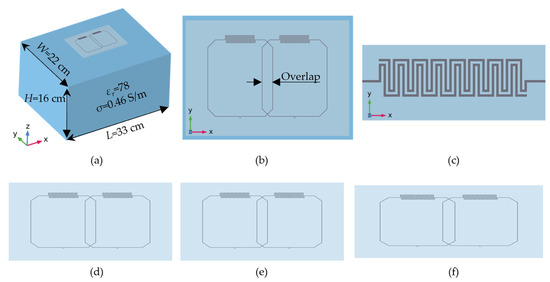
Figure 1
Open AccessCommunication
Optical Fiber Temperature and Humidity Dual Parameter Sensing Based on Fiber Bragg Gratings and Porous Film
Sensors 2023, 23(17), 7587; https://doi.org/10.3390/s23177587 (registering DOI) - 01 Sep 2023
Abstract
A porous anodic alumina film is proposed to construct an optical fiber temperature and humidity sensor. In the sensor structure, a fiber Bragg grating is used to detect the environment temperature, and the porous film is used to detect the environment humidity. The
[...] Read more.
A porous anodic alumina film is proposed to construct an optical fiber temperature and humidity sensor. In the sensor structure, a fiber Bragg grating is used to detect the environment temperature, and the porous film is used to detect the environment humidity. The proposed porous anodic alumina film was fabricated by anodic oxidation reaction, and it is suitable for the use of humidity detection due to its porous structure. Experimental results show the temperature sensitivity of the proposed sensor was 10.4 pm/°C and the humidity sensitivity of the proposed sensor was 185 pm/%RH.
Full article
(This article belongs to the Section Physical Sensors)
►▼
Show Figures
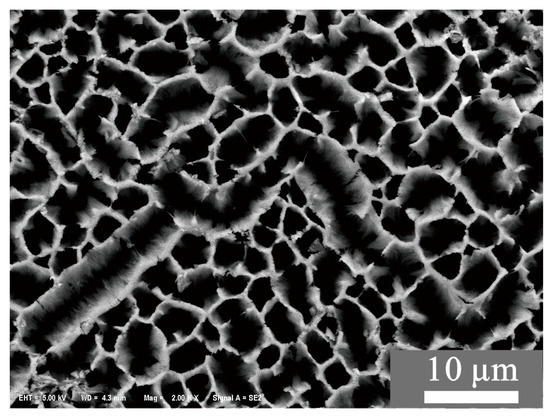
Figure 1
Open AccessArticle
A Smart Home Digital Twin to Support the Recognition of Activities of Daily Living
Sensors 2023, 23(17), 7586; https://doi.org/10.3390/s23177586 (registering DOI) - 01 Sep 2023
Abstract
One of the challenges in the field of human activity recognition in smart homes based on IoT sensors is the variability in the recorded data. This variability arises from differences in home configurations, sensor network setups, and the number and habits of inhabitants,
[...] Read more.
One of the challenges in the field of human activity recognition in smart homes based on IoT sensors is the variability in the recorded data. This variability arises from differences in home configurations, sensor network setups, and the number and habits of inhabitants, resulting in a lack of data that accurately represent the application environment. Although simulators have been proposed in the literature to generate data, they fail to bridge the gap between training and field data or produce diverse datasets. In this article, we propose a solution to address this issue by leveraging the concept of digital twins to reduce the disparity between training and real-world data and generate more varied datasets. We introduce the Virtual Smart Home, a simulator specifically designed for modeling daily life activities in smart homes, which is adapted from the Virtual Home simulator. To assess its realism, we compare a set of activity data recorded in a real-life smart apartment with its replication in the VirtualSmartHome simulator. Additionally, we demonstrate that an activity recognition algorithm trained on the data generated by the VirtualSmartHome simulator can be successfully validated using real-life field data.
Full article
(This article belongs to the Special Issue Internet of Things for Smart Homes Ⅲ)
►▼
Show Figures
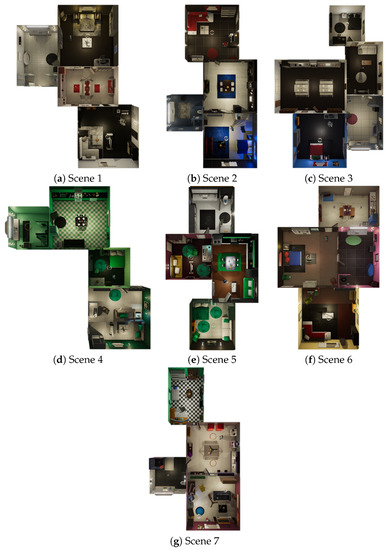
Figure 1
Open AccessArticle
Effect of Additional Mass on Natural Frequencies of Weight-Sensing Structures
Sensors 2023, 23(17), 7585; https://doi.org/10.3390/s23177585 (registering DOI) - 01 Sep 2023
Abstract
The phenomena of variability and interference in the natural frequencies of weight-sensing structures applied in complex working conditions must solve the problem of reducing or eliminating resonance under low-frequency vibrations to maximize stability, accuracy and reliability. The influence laws of the additional mass
[...] Read more.
The phenomena of variability and interference in the natural frequencies of weight-sensing structures applied in complex working conditions must solve the problem of reducing or eliminating resonance under low-frequency vibrations to maximize stability, accuracy and reliability. The influence laws of the additional mass with relevant characteristics on the natural frequencies, which include the components of mass, stiffness and center-of-mass distribution, etc. Firstly, the theoretical formulas of the mathematical model are given based on different characteristics of the weight-sensing structure, and various combinations of additional masses on the weight-sensing structures are adjusted in the X-, Y-, and Z-directions. The key factors to be specifically considered in the theoretical formulas are discussed through simulation analysis and experimental validation. Secondly, the locking strength of the fastening screws of some components was changed, and another component was placed on the experimental platform in the experiment. The results show that the mass, center-of-mass, stiffness distribution and other factors of the additional mass have different effects on the natural frequencies, which are important for the demand for high-precision, high-stability weighing measurement. The results of this research can provide an effective scientific evaluation basis for the reliable prediction of natural frequencies.
Full article
(This article belongs to the Special Issue Sensor-Based Frequency, Time-Frequency, and Higher Order Signal Processing for Condition Monitoring, Structural Health Monitoring, and Non-Destructive Testing)
►▼
Show Figures
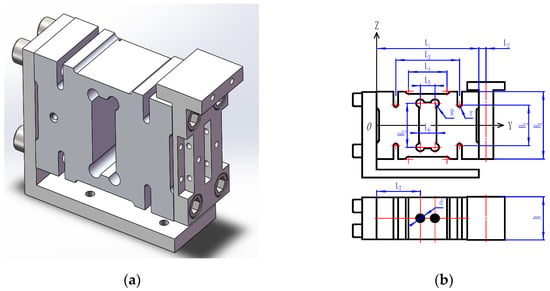
Figure 1
Open AccessArticle
Identification and Spatial Analysis of Land Salinity in China’s Yellow River Delta Using a Land Salinity Monitoring Index from Harmonized UAV-Landsat Imagery
Sensors 2023, 23(17), 7584; https://doi.org/10.3390/s23177584 (registering DOI) - 01 Sep 2023
Abstract
Precise identification and spatial analysis of land salinity in China’s Yellow River Delta are essential for the rational utilization and sustainable development of land resources. However, the accurate retrieval model construction for monitoring land salinity remains challenging. This study constructed a land salinity
[...] Read more.
Precise identification and spatial analysis of land salinity in China’s Yellow River Delta are essential for the rational utilization and sustainable development of land resources. However, the accurate retrieval model construction for monitoring land salinity remains challenging. This study constructed a land salinity retrieval framework using a harmonized UAV and Landsat-9 multi-spectral dataset. The Kenli district of the Yellow River Delta was selected as the case study area, and a land salinity monitoring index (LSMI) was proposed based on field survey data and UAV multi-spectral image and applied to the reflectance-corrected Landsat-9 OLI image. The land salinity distribution patterns were then mapped and spatially analyzed using Moran’s I and Getis-Ord GI* analysis. The results demonstrated the following: (1) The LSMI-based method can accurately retrieve land salinity content with a validation determination coefficient (R2), root mean square error (RMSE), and residual predictive deviation (RPD) of 0.75, 1.89, and 2.11, respectively. (2) Land salinization affected 93.12% of the cultivated land in the study area, and the severely saline soil grade (with a salinity content of 6–8 g/kg) covered 38.41% of the total cultivated land area and was widely distributed throughout the study area. (3) Saline land exhibited a positive spatial autocorrelation with a value of 0.311 at the p = 0.000 level; high–high cluster types occurred mainly in the Kendong and Huanghekou towns (80%), while low–low cluster types were mainly located in the Dongji, Haojia, Kenli, and Shengtuo towns (88.46%). The spatial characteristics of various salinity grades exhibit significant variations, and conducting separate spatial analyses is recommended for future studies.
Full article
(This article belongs to the Special Issue Remote Sensing of Plants, Soil, and Atmosphere for Agricultural Monitoring)
►▼
Show Figures

Figure 1
Open AccessArticle
IoT and Ensemble Long-Short-Term-Memory-Based Evapotranspiration Forecasting for Riyadh
by
, , , , , and
Sensors 2023, 23(17), 7583; https://doi.org/10.3390/s23177583 (registering DOI) - 01 Sep 2023
Abstract
Evapotranspiration (ET) is the fundamental component of efficient water resource management. Accurate forecasting of ET is essential for efficient water utilization in agriculture. ET forecasting is a complex process due to the requirements of large meteorological variables. The recommended approach is based on
[...] Read more.
Evapotranspiration (ET) is the fundamental component of efficient water resource management. Accurate forecasting of ET is essential for efficient water utilization in agriculture. ET forecasting is a complex process due to the requirements of large meteorological variables. The recommended approach is based on the Internet of Things (IoT) and an ensemble-learning-based approach for meteorological data collection and ET forecasting with limited meteorological conditions. IoT is part of the recommended approach to collect real-time data on meteorological variables. The daily maximum temperature (T), mean humidity (Hm), and maximum wind speed (Ws) are used to forecast evapotranspiration (ET). Long short-term memory (LSTM) and ensemble LSTM with bagged and boosted approaches are implemented and evaluated for their accuracy in forecasting ET values using meteorological data from 2001 to 2023. The results demonstrate that the bagged LSTM approach accurately forecasts ET with limited meteorological conditions in Riyadh, Saudi Arabia, with the coefficient of determination (R
(This article belongs to the Special Issue AI, IoT and Smart Sensors for Precision Agriculture)
►▼
Show Figures

Figure 1
Open AccessArticle
Automatic Liver Tumor Segmentation from CT Images Using Graph Convolutional Network
Sensors 2023, 23(17), 7561; https://doi.org/10.3390/s23177561 (registering DOI) - 01 Sep 2023
Abstract
Segmenting the liver and liver tumors in computed tomography (CT) images is an important step toward quantifiable biomarkers for a computer-aided decision-making system and precise medical diagnosis. Radiologists and specialized physicians use CT images to diagnose and classify liver organs and tumors. Because
[...] Read more.
Segmenting the liver and liver tumors in computed tomography (CT) images is an important step toward quantifiable biomarkers for a computer-aided decision-making system and precise medical diagnosis. Radiologists and specialized physicians use CT images to diagnose and classify liver organs and tumors. Because these organs have similar characteristics in form, texture, and light intensity values, other internal organs such as the heart, spleen, stomach, and kidneys confuse visual recognition of the liver and tumor division. Furthermore, visual identification of liver tumors is time-consuming, complicated, and error-prone, and incorrect diagnosis and segmentation can hurt the patient’s life. Many automatic and semi-automatic methods based on machine learning algorithms have recently been suggested for liver organ recognition and tumor segmentation. However, there are still difficulties due to poor recognition precision and speed and a lack of dependability. This paper presents a novel deep learning-based technique for segmenting liver tumors and identifying liver organs in computed tomography maps. Based on the LiTS17 database, the suggested technique comprises four Chebyshev graph convolution layers and a fully connected layer that can accurately segment the liver and liver tumors. Thus, the accuracy, Dice coefficient, mean IoU, sensitivity, precision, and recall obtained based on the proposed method according to the LiTS17 dataset are around 99.1%, 91.1%, 90.8%, 99.4%, 99.4%, and 91.2%, respectively. In addition, the effectiveness of the proposed method was evaluated in a noisy environment, and the proposed network could withstand a wide range of environmental signal-to-noise ratios (SNRs). Thus, at SNR = −4 dB, the accuracy of the proposed method for liver organ segmentation remained around 90%. The proposed model has obtained satisfactory and favorable results compared to previous research. According to the positive results, the proposed model is expected to be used to assist radiologists and specialist doctors in the near future.
Full article
(This article belongs to the Special Issue Artificial Intelligence and Machine Learning in Sensing and Image Processing)
►▼
Show Figures

Figure 1
Open AccessArticle
A Long Skip Connection for Enhanced Color Selectivity in CNN Architectures
Sensors 2023, 23(17), 7582; https://doi.org/10.3390/s23177582 (registering DOI) - 31 Aug 2023
Abstract
Some recent studies show that filters in convolutional neural networks (CNNs) have low color selectivity in datasets of natural scenes such as Imagenet. CNNs, bio-inspired by the visual cortex, are characterized by their hierarchical learning structure which appears to gradually transform the representation
[...] Read more.
Some recent studies show that filters in convolutional neural networks (CNNs) have low color selectivity in datasets of natural scenes such as Imagenet. CNNs, bio-inspired by the visual cortex, are characterized by their hierarchical learning structure which appears to gradually transform the representation space. Inspired by the direct connection between the LGN and V4, which allows V4 to handle low-level information closer to the trichromatic input in addition to processed information that comes from V2/V3, we propose the addition of a long skip connection (LSC) between the first and last blocks of the feature extraction stage to allow deeper parts of the network to receive information from shallower layers. This type of connection improves classification accuracy by combining simple-visual and complex-abstract features to create more color-selective ones. We have applied this strategy to classic CNN architectures and quantitatively and qualitatively analyzed the improvement in accuracy while focusing on color selectivity. The results show that, in general, skip connections improve accuracy, but LSC improves it even more and enhances the color selectivity of the original CNN architectures. As a side result, we propose a new color representation procedure for organizing and filtering feature maps, making their visualization more manageable for qualitative color selectivity analysis.
Full article
(This article belongs to the Topic Applied Computer Vision and Pattern Recognition: 2nd Volume)
Open AccessArticle
Road-Network-Map-Assisted Vehicle Positioning Based on Pose Graph Optimization
Sensors 2023, 23(17), 7581; https://doi.org/10.3390/s23177581 (registering DOI) - 31 Aug 2023
Abstract
Satellite signals are easily lost in urban areas, which causes difficulty in vehicles being located with high precision. Visual odometry has been increasingly applied in navigation systems to solve this problem. However, visual odometry relies on dead-reckoning technology, where a slight positioning error
[...] Read more.
Satellite signals are easily lost in urban areas, which causes difficulty in vehicles being located with high precision. Visual odometry has been increasingly applied in navigation systems to solve this problem. However, visual odometry relies on dead-reckoning technology, where a slight positioning error can accumulate over time, resulting in a catastrophic positioning error. Thus, this paper proposes a road-network-map-assisted vehicle positioning method based on the theory of pose graph optimization. This method takes the dead-reckoning result of visual odometry as the input and introduces constraints from the point-line form road network map to suppress the accumulated error and improve vehicle positioning accuracy. We design an optimization and prediction model, and the original trajectory of visual odometry is optimized to obtain the corrected trajectory by introducing constraints from map correction points. The vehicle positioning result at the next moment is predicted based on the latest output of the visual odometry and corrected trajectory. The experiments carried out on the KITTI and campus datasets demonstrate the superiority of the proposed method, which can provide stable and accurate vehicle position estimation in real-time, and has higher positioning accuracy than similar map-assisted methods.
Full article
(This article belongs to the Topic Information Sensing Technology for Intelligent/Driverless Vehicle, 2nd Volume)
►▼
Show Figures
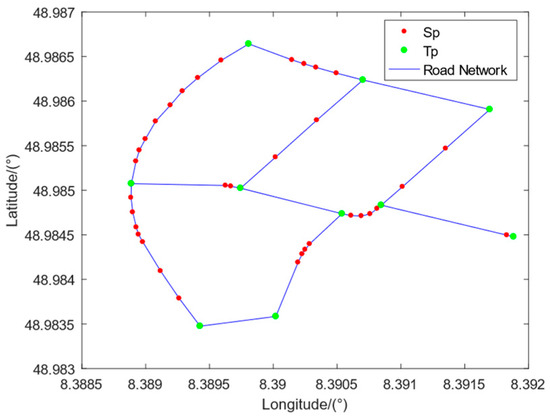
Figure 1
Open AccessArticle
Performance Analysis of Lambda Architecture-Based Big-Data Systems on Air/Ground Surveillance Application with ADS-B Data
Sensors 2023, 23(17), 7580; https://doi.org/10.3390/s23177580 (registering DOI) - 31 Aug 2023
Abstract
This study introduces a novel methodology designed to assess the accuracy of data processing in the Lambda Architecture (LA), an advanced big-data framework qualified for processing streaming (data in motion) and batch (data at rest) data. Distinct from prior studies that have focused
[...] Read more.
This study introduces a novel methodology designed to assess the accuracy of data processing in the Lambda Architecture (LA), an advanced big-data framework qualified for processing streaming (data in motion) and batch (data at rest) data. Distinct from prior studies that have focused on hardware performance and scalability evaluations, our research uniquely targets the intricate aspects of data-processing accuracy within the various layers of LA. The salient contribution of this study lies in its empirical approach. For the first time, we provide empirical evidence that validates previously theoretical assertions about LA, which have remained largely unexamined due to LA’s intricate design. Our methodology encompasses the evaluation of prospective technologies across all levels of LA, the examination of layer-specific design limitations, and the implementation of a uniform software development framework across multiple layers. Specifically, our methodology employs a unique set of metrics, including data latency and processing accuracy under various conditions, which serve as critical indicators of LA’s accurate data-processing performance. Our findings compellingly illustrate LA’s “eventual consistency”. Despite potential transient inconsistencies during real-time processing in the Speed Layer (SL), the system ultimately converges to deliver precise and reliable results, as informed by the comprehensive computations of the Batch Layer (BL). This empirical validation not only confirms but also quantifies the claims posited by previous theoretical discourse, with our results indicating a 100% accuracy rate under various severe data-ingestion scenarios. We applied this methodology in a practical case study involving air/ground surveillance, a domain where data accuracy is paramount. This application demonstrates the effectiveness of the methodology using real-world data-intake scenarios, therefore distinguishing this study from hardware-centric evaluations. This study not only contributes to the existing body of knowledge on LA but also addresses a significant literature gap. By offering a novel, empirically supported methodology for testing LA, a methodology with potential applicability to other big-data architectures, this study sets a precedent for future research in this area, advancing beyond previous work that lacked empirical validation.
Full article
(This article belongs to the Special Issue Edge Computing in Sensors Networks)
►▼
Show Figures
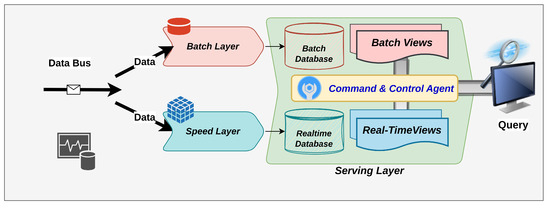
Figure 1
Open AccessArticle
Rectangular Amplitude Mask-Based Auto-Focus Method with a Large Range and High Precision for a Micro-LED Wafer Defects Detection System
Sensors 2023, 23(17), 7579; https://doi.org/10.3390/s23177579 (registering DOI) - 31 Aug 2023
Abstract
Auto-focus technology plays an important role in the Micro-LED wafer defects detection system. How to accurately measure the defocus amount and the defocus direction of the Micro-LED wafer sample in a large linear range is one of the keys to realizing wafer defects
[...] Read more.
Auto-focus technology plays an important role in the Micro-LED wafer defects detection system. How to accurately measure the defocus amount and the defocus direction of the Micro-LED wafer sample in a large linear range is one of the keys to realizing wafer defects detection. In this paper, a large range and high-precision auto-focus method based on a rectangular amplitude mask is proposed. A rectangular amplitude mask without a long edge is used to modulate the shape of the incident laser beams so that the spot shape distribution of the reflected laser beam on the sensor changes with the defocus amount of the wafer sample. By calculating the shape of the light spots, the defocus amount and the defocus direction can be obtained at the same time. The experimental results show that under the 20× microscopy objective, the linear range of the auto-focus system is 480 μm and the accuracy can reach 1 μm. It can be seen that the automatic focusing method proposed in this paper has the advantages of large linear range, high accuracy, and compact structure, which can meet the requirements of the Micro-LED wafer defects detection equipment.
Full article
(This article belongs to the Special Issue Optical Sensors and Measuring Systems: Design and Applications)
►▼
Show Figures
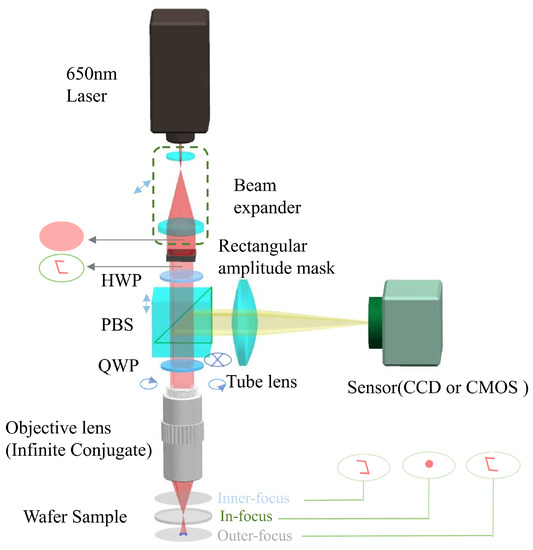
Figure 1
Open AccessReview
Influence of Annealing on Polymer Optical Fiber Bragg Grating Inscription, Stability and Sensing: A Review
by
, , , , , , and
Sensors 2023, 23(17), 7578; https://doi.org/10.3390/s23177578 - 31 Aug 2023
Abstract
This article reviews recent research progress on the annealing effects on polymer optical fibers (POFs), which are of great importance for inscription, stability and sensing applications of fiber Bragg gratings (FBGs) in POFs due to their unique properties related to polymer molecular chains.
[...] Read more.
This article reviews recent research progress on the annealing effects on polymer optical fibers (POFs), which are of great importance for inscription, stability and sensing applications of fiber Bragg gratings (FBGs) in POFs due to their unique properties related to polymer molecular chains. In this review, the principle of annealing to reduce frozen-in stress in POFs drawing and different annealing timings are firstly summarized. Then, the annealing methods for POFs are introduced under several different conditions (temperature, humidity, strain, stress and solution). Afterwards, the principle of FBGs and several inscription techniques are reported. Subsequently, the annealing effects on the properties of POFs and polymer optical fiber Bragg gratings (POFBGs) quality are discussed. Finally, the influence of annealing on POFBG sensitivity is summarized. Overall, this paper provides a comprehensive overview of annealing techniques and their impact on both POFs and POFBGs. We hope that it will highlight the important progress made in this field.
Full article
(This article belongs to the Special Issue Recent Advances in Fiber Bragg Grating Sensing-2nd Edition)
►▼
Show Figures

Figure 1
Open AccessArticle
Efficient Sigma–Delta Sensor Array Beamforming
Sensors 2023, 23(17), 7577; https://doi.org/10.3390/s23177577 - 31 Aug 2023
Abstract
Nowadays, sensors with built-in SDM are widely used in consumer, industrial, automotive, and medical applications, as they have become a cost-effective and convenient way to deliver data to digital processors. This is the case for micro-electro-mechanical system (MEMS), digital microphones that convert analog
[...] Read more.
Nowadays, sensors with built-in SDM are widely used in consumer, industrial, automotive, and medical applications, as they have become a cost-effective and convenient way to deliver data to digital processors. This is the case for micro-electro-mechanical system (MEMS), digital microphones that convert analog audio to a PDM bitstream. However, as the SDM output a PDM signal, sensors require either built-in or external high-order decimation filters to demodulate the PDM signal to a baseband multi-bit pulse-code modulated (PCM) signal. Because of this extra circuit requirement, the implementation of sensor array algorithms, such as beamforming in embedded systems (where the processing resources are critical) or in VLSI circuits (where the power and area are crucial) becomes especially expensive as a large number of parallel decimation filters are required. This article proposes a novel architecture for beamforming algorithm implementation that fuses delay and decimation operations based on maximally flat (MAXFLAT) filters to make array processing more affordable. As proof of concept, we present an implementation example of a delay-and-sum (DAS) beamformer at given spatial and frequency requirements using this novel approach. Under these specifications, the proposed architecture requires 52% lower storage resources and 19% lower computational resources than the most efficient state-of-the-art architecture.
Full article
(This article belongs to the Special Issue Energy-Efficient Communication Networks and Systems)
Open AccessArticle
Control Architecture for Connected Vehicle Platoons: From Sensor Data to Controller Design Using Vehicle-to-Everything Communication
Sensors 2023, 23(17), 7576; https://doi.org/10.3390/s23177576 - 31 Aug 2023
Abstract
A suitable control architecture for connected vehicle platoons may be seen as a promising solution for today’s traffic problems, by improving road safety and traffic flow, reducing emissions and fuel consumption, and increasing driver comfort. This paper provides a comprehensive overview concerning the
[...] Read more.
A suitable control architecture for connected vehicle platoons may be seen as a promising solution for today’s traffic problems, by improving road safety and traffic flow, reducing emissions and fuel consumption, and increasing driver comfort. This paper provides a comprehensive overview concerning the defining levels of a general control architecture for connected vehicle platoons, intending to illustrate the options available in terms of sensor technologies, in-vehicle networks, vehicular communication, and control solutions. Moreover, starting from the proposed control architecture, a solution that implements a Cooperative Adaptive Cruise Control (CACC) functionality for a vehicle platoon is designed. Also, two control algorithms based on the distributed model-based predictive control (DMPC) strategy and the feedback gain matrix method for the control level of the CACC functionality are proposed. The designed architecture was tested in a simulation scenario, and the obtained results show the control performances achieved using the proposed solutions suitable for the longitudinal dynamics of vehicle platoons.
Full article
(This article belongs to the Special Issue Vehicular Sensing for Improved Urban Mobility)
Open AccessArticle
Satellite Interference Source Direction of Arrival (DOA) Estimation Based on Frequency Domain Covariance Matrix Reconstruction
Sensors 2023, 23(17), 7575; https://doi.org/10.3390/s23177575 - 31 Aug 2023
Abstract
Direction of arrival (DOA) estimation is an effective method for detecting various active interference signals during the satellite navigation process. It can be utilized for both interference detection and anti-interference applications. This paper proposes a DOA estimation algorithm for satellite interference sources based
[...] Read more.
Direction of arrival (DOA) estimation is an effective method for detecting various active interference signals during the satellite navigation process. It can be utilized for both interference detection and anti-interference applications. This paper proposes a DOA estimation algorithm for satellite interference sources based on frequency domain covariance matrix reconstruction (FDCMR) to address various types of active interference that may occur in the satellite navigation positioning process. This algorithm can estimate the DOA of coherent signals from multiple frequency points under low signal-to-noise ratio (SNR) conditions. The signals received from the array are transformed from the time domain to the frequency domain using a fast Fourier transform (FFT). The data corresponding to the frequency point of the target signal is extracted from the signal in the frequency domain. The frequency domain covariance matrix of the received array signals is reconstructed by utilizing its covariance matrix property. The spatial spectrum search method is used for the final DOA estimation. Simulation experiments have shown that the proposed algorithm performs well in the DOA estimation under low SNR conditions and also resolves coherency. Moreover, the algorithm’s effectiveness is verified through comparison with three other algorithms. Finally, the algorithm’s applicability is validated through simulations of various interference scenarios.
Full article
(This article belongs to the Section Communications)
Open AccessArticle
Advanced IoT Pressure Monitoring System for Real-Time Landfill Gas Management
Sensors 2023, 23(17), 7574; https://doi.org/10.3390/s23177574 - 31 Aug 2023
Abstract
This research presents a novel stand-alone device for the autonomous measurement of gas pressure levels on an active landfill site, which enables the real-time monitoring of gas dynamics and supports the early detection of critical events. The developed device employs advanced sensing technologies
[...] Read more.
This research presents a novel stand-alone device for the autonomous measurement of gas pressure levels on an active landfill site, which enables the real-time monitoring of gas dynamics and supports the early detection of critical events. The developed device employs advanced sensing technologies and wireless communication capabilities, enabling remote data transmission and access via the Internet. Through extensive field experiments, we demonstrate the high sampling rate of the device and its ability to detect significant events related to gas generation dynamics in landfills, such as flare shutdowns or blockages that could lead to hazardous conditions. The validation of the device’s performance against a high-end analytical system provides further evidence of its reliability and accuracy. The developed technology herein offers a cost-effective and scalable solution for environmental landfill gas monitoring and management. We expect that this research will contribute to the advancement of environmental monitoring technologies and facilitate better decision-making processes for sustainable waste management.
Full article
(This article belongs to the Special Issue Internet of Things (IoT) and Neural Networks in Smart Sensor Environments)
►▼
Show Figures

Figure 1
Open AccessArticle
Optimization of Gearbox Fault Detection Method Based on Deep Residual Neural Network Algorithm
Sensors 2023, 23(17), 7573; https://doi.org/10.3390/s23177573 - 31 Aug 2023
Abstract
Because of its long running time, complex working environment, and for other reasons, a gear is prone to failure, and early failure is difficult to detect by direct observation; therefore, fault diagnosis of gears is very necessary. Neural network algorithms have been widely
[...] Read more.
Because of its long running time, complex working environment, and for other reasons, a gear is prone to failure, and early failure is difficult to detect by direct observation; therefore, fault diagnosis of gears is very necessary. Neural network algorithms have been widely used to realize gear fault diagnosis, but the structure of the neural network model is complicated, the training time is long and the model is not easy to converge. To solve the above problems and combine the advantages of the ResNeXt50 model in the extraction of image features, this paper proposes a gearbox fault detection method that integrates the convolutional block attention module (CBAM). Firstly, the CBAM is embedded in the ResNeXt50 network to enhance the extraction of image channels and spatial features. Secondly, the different time–frequency analysis method was compared and analyzed, and the method with the better effect was selected to convert the one-dimensional vibration signal in the open data set of the gearbox into a two-dimensional image, eliminating the influence of the redundant background noise, and took it as the input of the model for training. Finally, the accuracy and the average training time of the model were obtained by entering the test set into the model, and the results were compared with four other classical convolutional neural network models. The results show that the proposed method performs well both in fault identification accuracy and average training time under two working conditions, and it also provides some references for existing gear failure diagnosis research.
Full article
(This article belongs to the Special Issue Deep-Learning-Based Defect Detection for Smart Manufacturing)
►▼
Show Figures

Figure 1

Journal Menu
► ▼ Journal Menu-
- Sensors Home
- Aims & Scope
- Editorial Board
- Reviewer Board
- Topical Advisory Panel
- Instructions for Authors
- Special Issues
- Topics
- Sections & Collections
- Article Processing Charge
- Indexing & Archiving
- Editor’s Choice Articles
- Most Cited & Viewed
- Journal Statistics
- Journal History
- Journal Awards
- Society Collaborations
- Conferences
- Editorial Office
Journal Browser
► ▼ Journal Browser-
arrow_forward_ios
Forthcoming issue
arrow_forward_ios Current issue - Vol. 23 (2023)
- Vol. 22 (2022)
- Vol. 21 (2021)
- Vol. 20 (2020)
- Vol. 19 (2019)
- Vol. 18 (2018)
- Vol. 17 (2017)
- Vol. 16 (2016)
- Vol. 15 (2015)
- Vol. 14 (2014)
- Vol. 13 (2013)
- Vol. 12 (2012)
- Vol. 11 (2011)
- Vol. 10 (2010)
- Vol. 9 (2009)
- Vol. 8 (2008)
- Vol. 7 (2007)
- Vol. 6 (2006)
- Vol. 5 (2005)
- Vol. 4 (2004)
- Vol. 3 (2003)
- Vol. 2 (2002)
- Vol. 1 (2001)
Highly Accessed Articles
Latest Books
E-Mail Alert
News
Topics
Topic in
Energies, Applied Sciences, Sensors, Electronics, Sci
Modeling and Optimizing Operation of Energy Internet
Topic Editors: Qiuye Sun, Rui Wang, Lei LiuDeadline: 30 September 2023
Topic in
Coatings, Electronics, Energies, Sensors, Telecom
Condition Monitoring and Diagnostic Methods for Power Equipment in New Energy Power Systems
Topic Editors: Shuaibing Li, Guoqiang Gao, Guochang Li, Yi Cui, Jiefeng Liu, Guangya Zhu, Jin LiDeadline: 15 October 2023
Topic in
Energies, Applied Sciences, Electronics, Sensors, Sci
Power Quality
Topic Editors: Juan-José González de la Rosa, Olivia Florencias-Oliveros, Sara SulisDeadline: 25 October 2023
Topic in
AI, Algorithms, Applied Sciences, BDCC, MAKE, Sensors
Artificial Intelligence and Fuzzy Systems
Topic Editors: Amelia Zafra, Jose Manuel Soto HidalgoDeadline: 30 November 2023

Conferences
22 September 2023
Sensors | Sensor-Centric Data-Intense Approaches to Manufacturing Operations from Cradle to Grave

27 October–10 November 2023
The 4th International Electronic Conference on Applied Sciences (ASEC2023)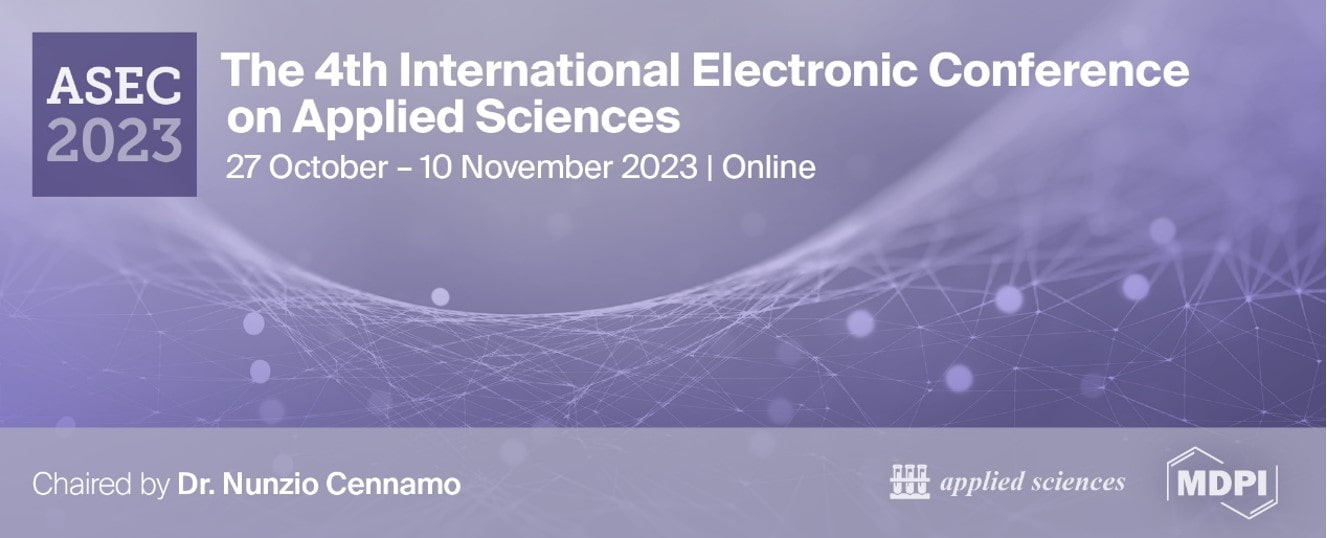

Special Issues
Special Issue in
Sensors
Machine Learning, Big Data and Artificial Intelligence Enabled Sensing Systems
Guest Editors: Wen Shen, Jessica Koehne, Ye Sun, Dazhong WuDeadline: 1 September 2023
Special Issue in
Sensors
Sensors and Imaging for Medical Robotics
Guest Editor: Gabor KosaDeadline: 20 September 2023
Special Issue in
Sensors
Advances in High-Speed CMOS Image Sensor and Related Technologies
Guest Editor: Dima ManeuskiDeadline: 30 September 2023
Special Issue in
Sensors
Fluorescence-Based Protein Biosensors
Guest Editors: Stefano Bettati, Stefano Bruno, Luca Ronda, Marialaura MarchettiDeadline: 10 October 2023
Topical Collections
Topical Collection in
Sensors
Sensors in Agriculture and Forestry
Collection Editor: Gonzalo Pajares Martinsanz
Topical Collection in
Sensors
Smart Industrial Wireless Sensor Networks
Collection Editors: Lei Shu, Gerhard P. Hancke, Chunsheng Zhu
Topical Collection in
Sensors
Smart Communication Protocols and Algorithms for Sensor Networks
Collection Editors: Jaime Lloret, Guangjie Han




